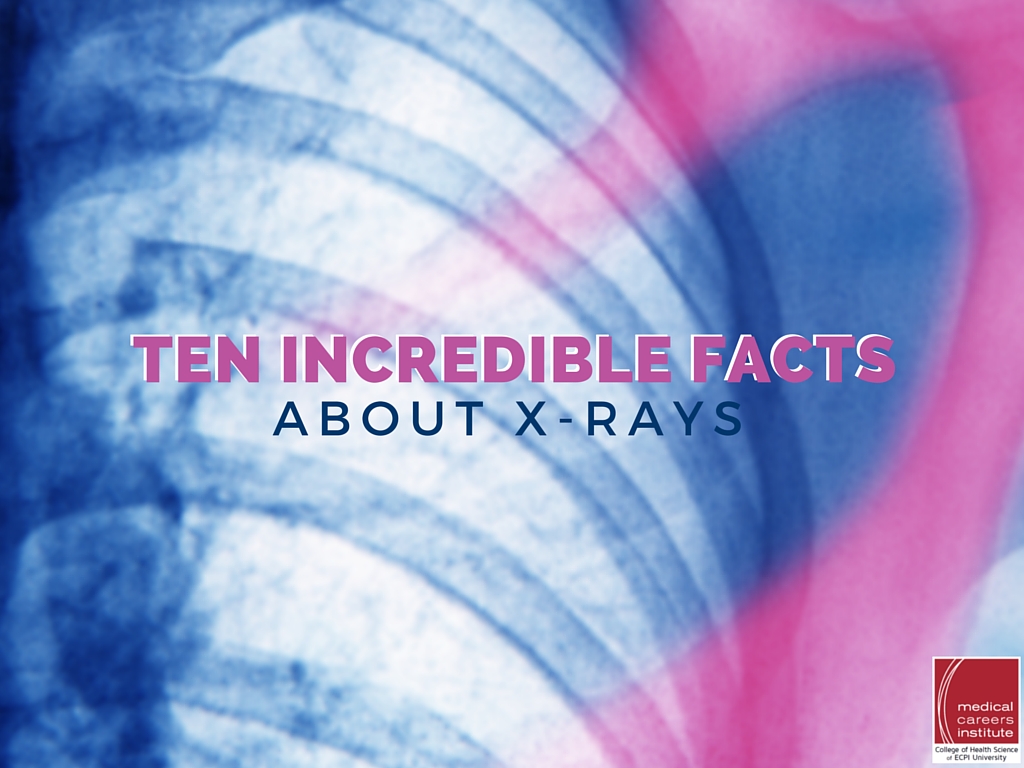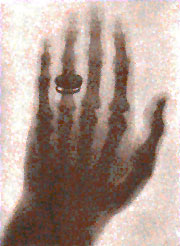
10 Incredible Facts About X Rays to Inspire Your Radiography Career
X-rays are a well-known imaging technique used for a variety of diagnostic purposes in health care. Because of the uses of x-rays, x-ray technicians are an integral part of diagnostics, helping physicians determine what a patient's needs are so they can be treated appropriately. However, x-rays are amazing beyond their diagnostic capabilities. Here are some amazing facts about x-rays that you may not have known!
1. X-rays have been around for a long time.
X-rays were discovered and developed by a German physicist named Wilhelm Roentgen in 1895. Within weeks of Roentgen's announcement of x-rays and what they were, physicians and surgeons were already using them to detect foreign objects in the body. The next year, x-rays were also being used as far away from Germany as the United States to detect bone fractures and gunshot wounds.
2. X-rays have helped unlock secrets of DNA.
Thanks to a form of x-rays, scientists were able to see the double-helix structure of DNA in the early 1950s. Though the man who originally used x-rays to detect the structure of DNA died before he could receive a Nobel Prize, his scientific discovery laid the foundation for all we have learned about DNA since, which has also unlocked amazing information into diagnostic testing, understanding the human body, and making advancements to bring people closer to optimal health.
3. X-rays have uses beyond diagnostic imaging.
In addition to their amazing uses in the medical field, x-rays have been used in the art world to examine under-paintings, which are rough sketches artists used to guide their final paintings. They have also been used to examine priceless artifacts, such as ancient Egyptian mummies or amber fossils, more closely without damaging them. X-rays have even been launched into space to gain glimpses into space far beyond our solar system.
4. X-rays have influenced medical treatments.
Early in the use of x-rays, they revolutionized tuberculosis treatments. Chest x-rays allowed physicians to detect shadows on the lungs earlier, making tuberculosis treatments more effective due to early diagnosis. X-rays were also used to burn off moles early in their history. Even today, x-rays (radiotherapy) are used to treat some forms of cancer.
5. X-rays will always have an air of mystery.
The "x" in "x-ray" stands for "unknown." Though scientists now know a lot about x-rays and what, exactly, they are, Roentgen named them x-rays because he detected the rays but didn't know quite what they were. Despite the new knowledge, we continue to call them "x-rays," which is a good reminder of the mystery surrounding their discovery and earliest use.
 6. The first x-ray did not impress the "patient."
6. The first x-ray did not impress the "patient."
Roentgen's first x-ray was of his wife's left hand, on which was her wedding ring. However, when she saw the image, she was not impressed. She said, "I have seen my death!"
7. X-rays went through a period of novelty.
Until it was known that x-rays were dangerous for those exposed to them, there was an element of novelty. In fact, x-ray machines were at carnivals and circuses in similar fashion to photo booths. Many shoe stores also used x-rays to ensure a better fit of shoe using the shape and size of the bones detected in the x-ray images.
8. Roentgen refused to patent x-rays.
After discovering x-rays, Roentgen refused to patent them. If he had, the use and development of x-rays would have been dramatically limited due to the patents and the costs involved in using them. However, Roentgen saw the widespread benefits that could come from x-rays and their use, and he wanted all of humankind to benefit, and not just him or a small group of scientists and physicians.
9. X-rays are the oldest and most useful medical technology.
Since x-rays have been around so long, and have such amazing uses in imaging, they are often called the most useful medical advancement. Despite incredible technology advancements in imaging, x-rays continue to be the most common form of imaging used by medical professionals.
10. Thomas Edison was afraid of x-rays.
For a number of years, Thomas Edison worked on creating an x-ray light bulb. However, even after he cancelled the project, one of his team members continued working on it, eventually developing cancer and dying due to radiation exposure. When one of Edison's assistants began developing symptoms of radiation sickness, Edison no longer wanted to talk about x-rays and declared that he was afraid of them.
She went to ECPI to be an x-ray tech, now she's making mad money working at Sentara.
— Scott (@lucky_sal) April 21, 2012
Considering a Future in Radiography?
Are you ready to start on the path to your amazing life as a radiographer? Contact ECPI University today to get more information about your Associate of Applied Science in Medical Radiography! It could be the Best Decision You Ever Make!
DISCLAIMER – ECPI University makes no claim, warranty or guarantee as to actual employability or earning potential to current, past or future students or graduates of any educational program we offer. The ECPI University website is published for informational purposes only. Every effort is made to ensure the accuracy of information contained on the ECPI.edu domain; however, no warranty of accuracy is made. No contractual rights, either expressed or implied, are created by its content.
For more information about ECPI University or any of our programs click here: http://www.ecpi.edu/ or http://ow.ly/Ca1ya.


